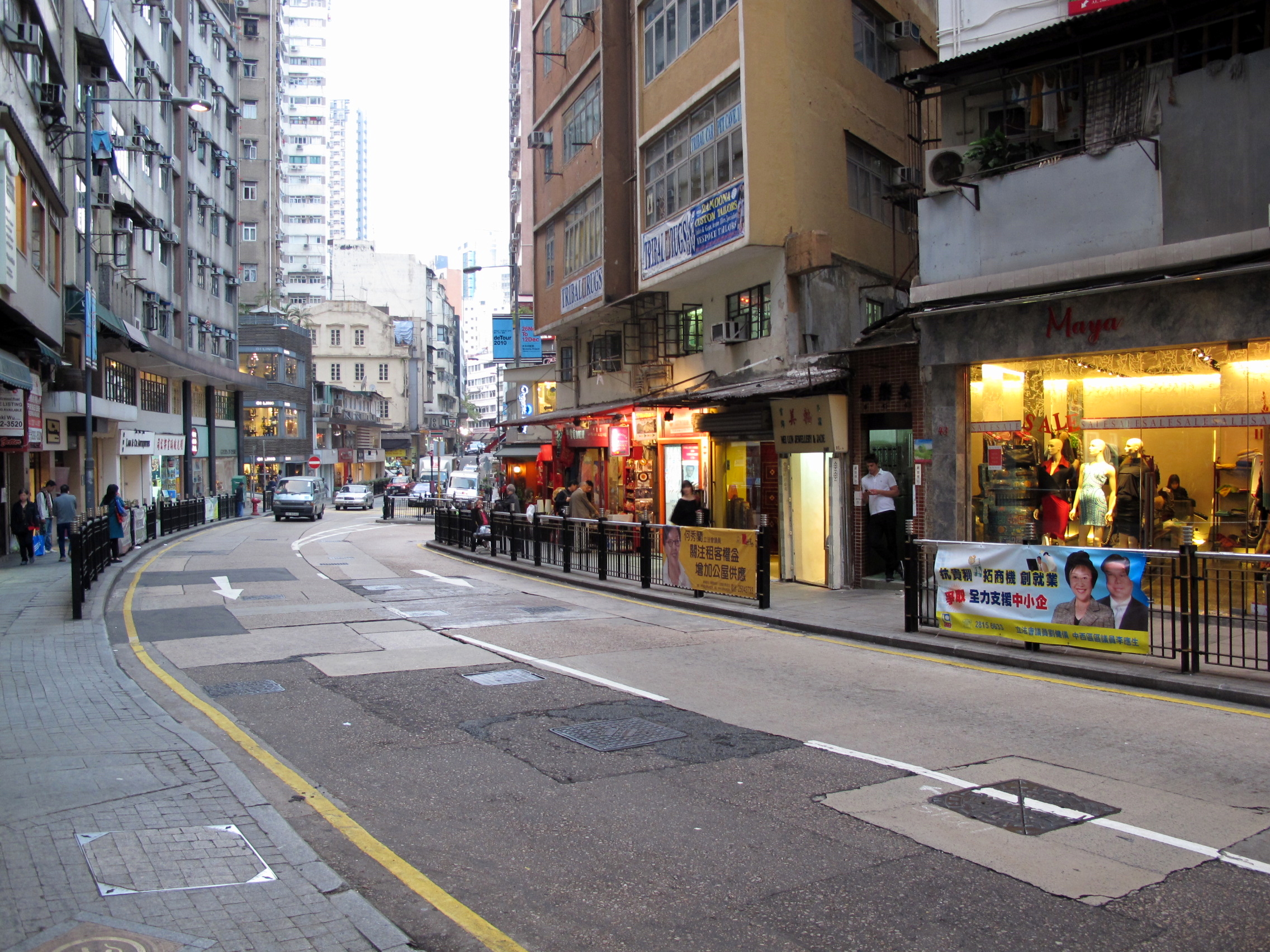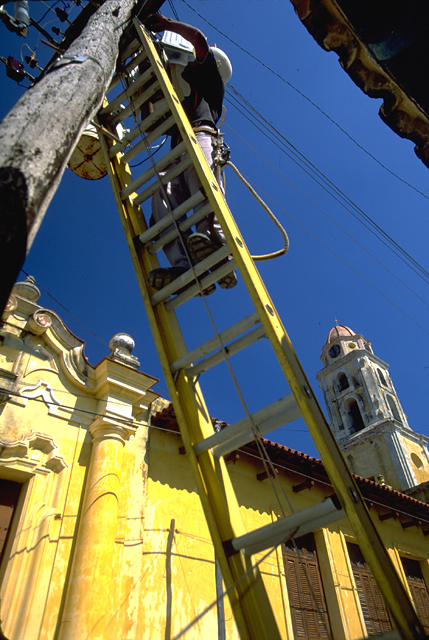|
Ladder Street
Ladder Street is a street in Sheung Wan, Hong Kong, consisting entirely of stone steps. One of the most visited temples in Hong Kong, the Man Mo Temple, is on Hollywood Road at the corner of Ladder Street. There is also the oldest western hospital, the Tung Wah Hospital, and some funeral homes in the area. It is said that more than 100 years ago, when coolies died, their bodies were rested here for funeral services before they were carried back to their home villages back in China. Euphemistically, people call these shops as "long-living shops". Another old-fashioned slang is "four-and-a-half-piece", possibly referring to the number of pieces of wood used to make a coffin. See also * Ladder streets *List of streets and roads in Hong Kong The following are incomplete lists of notable expressways, tunnels, bridges, roads, avenues, streets, crescents, squares and bazaars in Hong Kong. Many roads on the Hong Kong Island conform to the contours of the hill landscape. S ... [...More Info...] [...Related Items...] OR: [Wikipedia] [Google] [Baidu] |
List Of Streets And Roads In Hong Kong
The following are incomplete lists of notable expressways, tunnels, bridges, roads, avenues, streets, crescents, squares and bazaars in Hong Kong. Many roads on the Hong Kong Island conform to the contours of the hill landscape. Some of the roads on the north side of Hong Kong Island and southern Kowloon have a grid-like pattern.https://hub.hku.hk/bitstream/10722/28458/1/FullText.pdf The roads are generally designed to British standards. Expressways generally conform to British motorway standards. Speed limits on all roads are 50 km/h (30 mph), unless indicated otherwise by road signs. Usually, higher speed limits such as 70 km/h (45 mph) and 80 km/h (50 mph) have been raised to facilitate traffic flow along main roads and trunk roads. On most expressways, speed limits have been raised to 80 km/h and 100 km/h (60 mph) due to the smooth geometry and 110 km/h (70 mph) for North Lantau Highway, while some expressways suc ... [...More Info...] [...Related Items...] OR: [Wikipedia] [Google] [Baidu] |
Sheung Wan
Sheung Wan is an area in Hong Kong, located in the north-west of Hong Kong Island, between Central and Sai Ying Pun. Administratively, it is part of the Central and Western District. The name can be variously interpreted as ''Upper District'' (occupying relatively high ground compared to Central and Wan Chai), or ''Gateway District'' (perhaps a reference to the location where the British first entered and occupied Hong Kong). History Sheung Wan was one of the earliest settled places by the British, and belonged to the historical Victoria City. The site of the original occupation of Hong Kong Island by British forces in 1842 was at Possession Street, between Queen's Road Central and Hollywood Road. A plaque to this effect can be found in Hollywood Road Park at the top of Possession Street. The foot of Possession Street, Possession Point, was at that time on the shoreline, but is now several hundred yards inland due to reclamation. Geography Sheung Wan is surrounded ... [...More Info...] [...Related Items...] OR: [Wikipedia] [Google] [Baidu] |
Hong Kong
Hong Kong ( (US) or (UK); , ), officially the Hong Kong Special Administrative Region of the People's Republic of China (abbr. Hong Kong SAR or HKSAR), is a List of cities in China, city and Special administrative regions of China, special administrative region of China on the eastern Pearl River Delta in South China. With 7.5 million residents of various nationalities in a territory, Hong Kong is one of the List of countries and dependencies by population density, most densely populated places in the world. Hong Kong is also a major global financial centre and one of the Global city, most developed cities in the world. Hong Kong was established as a British Hong Kong, colony of the British Empire after the Qing dynasty, Qing Empire ceded Hong Kong Island from Bao'an County, Xin'an County at the end of the First Opium War in 1841 then again in 1842.. The colony expanded to the Kowloon Peninsula in 1860 after the Second Opium War and was further extended when Britain obtaine ... [...More Info...] [...Related Items...] OR: [Wikipedia] [Google] [Baidu] |
Man Mo Temple
Man Mo Temple or Man Mo Miu is a temple for the worship of the Civil or Literature God Man Tai () / Man Cheong () and the Martial God Mo Tai () / Kwan Tai (). The two Deities were popularly patronized by scholars and students seeking progress in their study or ranking in the civil examinations in the Ming The Ming dynasty (), officially the Great Ming, was an imperial dynasty of China, ruling from 1368 to 1644 following the collapse of the Mongol-led Yuan dynasty. The Ming dynasty was the last orthodox dynasty of China ruled by the Han pe ... and Qing Dynasty, Qing dynasties.Brief Information on Proposed Grade I Items, pp.31-32 There are several Man Mo temples in Hong Kong, the best known of which is the temple in Sheung Wan. |
Hollywood Road
Hollywood Road is a street in Central and Sheung Wan, on Hong Kong Island, Hong Kong. The street runs between Central and Sheung Wan, with Wyndham Street, Arbuthnot Road, Ladder Street, Upper Lascar Row, and Old Bailey Street in the vicinity. Hollywood Road was the second road to be built when the colony of Hong Kong was founded, after Queen's Road Central. It was the first to be completed. The Man Mo Temple was a place for trial in very early years. Name It was probably named by Sir John Francis Davis, the second Governor of Hong Kong, after his family home at Westbury-on-Trym, near Bristol, England. Another origin mentioned for the name is that holly shrubs were growing in the area when the road was constructed. Such plants were not indigenous to the area and would have been imported. History Hollywood Road was the second road to be built when the colony of Hong Kong was founded, after Queen's Road Central. It was the first to be completed. Like most major roads i ... [...More Info...] [...Related Items...] OR: [Wikipedia] [Google] [Baidu] |
Tung Wah Hospital
Tung Wah Hospital is a Charitable hospital in Hong Kong under the Tung Wah Group of Hospitals. Located above Possession Point, at 12 Po Yan Street in Sheung Wan, it is the first hospital established in Colonial Hong Kong for the general public in the 1870s. History The hospital was declared for construction on 26 March 1870 under the ''"Tung Wah Hospital Incorporation Ordinance"''. The push for the construction of the facility began when the British Colony's Registrar General saw an indiscriminate mix of the dead and dying huddled together in the nearby Kwong Fook I-tsz, a small temple built at Tai Ping Shan Street. The large number of deaths were in part due to the arrival of the upcoming Third Pandemic of bubonic plague from China, though it was not declared an official establishment until 1872. The hospital was subsidized by the government at a price of HKD 45,000 along with HKD 15,000 in land grant. The grand opening on 14 February 1872 was considered the grandest eve ... [...More Info...] [...Related Items...] OR: [Wikipedia] [Google] [Baidu] |
Coolies
A coolie (also spelled koelie, kuli, khuli, khulie, cooli, cooly, or quli) is a term for a low-wage labourer, typically of South Asian or East Asian descent. The word ''coolie'' was first popularized in the 16th century by European traders across Asia, and by the 18th century would refer to migrant Indian indentured labourers, and by the 19th century during the British colonial era, would gain a new definition of the systematic transportation and employment of Asian laborers via employment contracts on sugar plantations that had been formerly worked by enslaved Africans. The word has had a variety of other implications and is sometimes regarded as offensive or a pejorative, depending upon the historical and geographical context; in India, its country of origin, it is still considered a derogatory slur. It is similar, in many respects, to the Spanish term peón, although both terms are used in some countries with different implications. The word originated in the 17th-century ... [...More Info...] [...Related Items...] OR: [Wikipedia] [Google] [Baidu] |
Ladder Streets
Ladder streets are narrow streets in Hong Kong comprising steps. Most are found between Central and Sheung Wan and Mid-Levels on Hong Kong Island, from Queen's Road Central, through Hollywood Road and a few other cross streets, to Caine Road at the Mid-Levels. Other ladder streets exist outside of the immediate Mid-Levels area, such as Sands Street in Kennedy Town. Note that there is indeed a street named Ladder Street, composed entirely of stone steps, in Sheung Wan. While some ladder streets are made only of traditional steps, some at a moderate incline have portions that could be traversed with a rickshaw or cart. These portions had raised stones perpendicular to the street at regular intervals acting like a ratchet so that carts and rickshaws could be easily stopped and parked. This kind of paving can be found on Pottinger Street. The Duddell Street steps were declared a monument by the Antiquities and Monuments Office. [...More Info...] [...Related Items...] OR: [Wikipedia] [Google] [Baidu] |
Ladder Streets In Hong Kong
A ladder is a vertical or inclined set of rungs or steps used for climbing or descending. There are two types: rigid ladders that are self-supporting or that may be leaned against a vertical surface such as a wall, and rollable ladders, such as those made of rope or aluminium, that may be hung from the top. The vertical members of a rigid ladder are called stringers or rails (US) or stiles (UK). Rigid ladders are usually portable, but some types are permanently fixed to a structure, building, or equipment. They are commonly made of metal, wood, or fiberglass, but they have been known to be made of tough plastic. Historical usages Ladders are ancient tools and technology. A ladder is featured in a Mesolithic rock painting that is at least 10,000 years old, depicted in the Spider Caves in Valencia, Spain. The painting depicts two humans using a ladder to reach a wild honeybee nest to harvest honey. The ladder is depicted as long and flexible, possibly made out of some sort of gr ... [...More Info...] [...Related Items...] OR: [Wikipedia] [Google] [Baidu] |
Grade I Historic Buildings In Hong Kong
Grade most commonly refers to: * Grade (education), a measurement of a student's performance * Grade, the number of the year a student has reached in a given educational stage * Grade (slope), the steepness of a slope Grade or grading may also refer to: Music * Grade (music), a formally assessed level of profiency in a musical instrument * Grade (band), punk rock band * Grades (producer), British electronic dance music producer and DJ Science and technology Biology and medicine * Grading (tumors), a measure of the aggressiveness of a tumor in medicine * The Grading of Recommendations Assessment, Development and Evaluation (GRADE) approach * Evolutionary grade, a paraphyletic group of organisms Geology * Graded bedding, a description of the variation in grain size through a bed in a sedimentary rock * Metamorphic grade, an indicatation of the degree of metamorphism of rocks * Ore grade, a measure that describes the concentration of a valuable natural material in the surroun ... [...More Info...] [...Related Items...] OR: [Wikipedia] [Google] [Baidu] |



.jpg)
